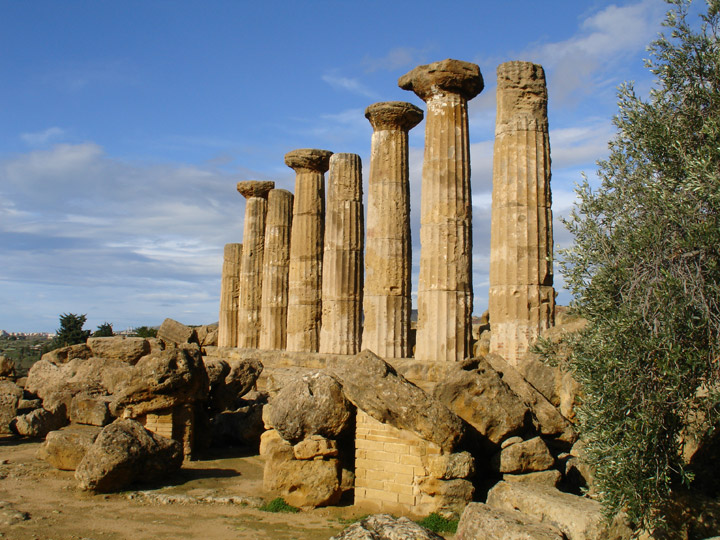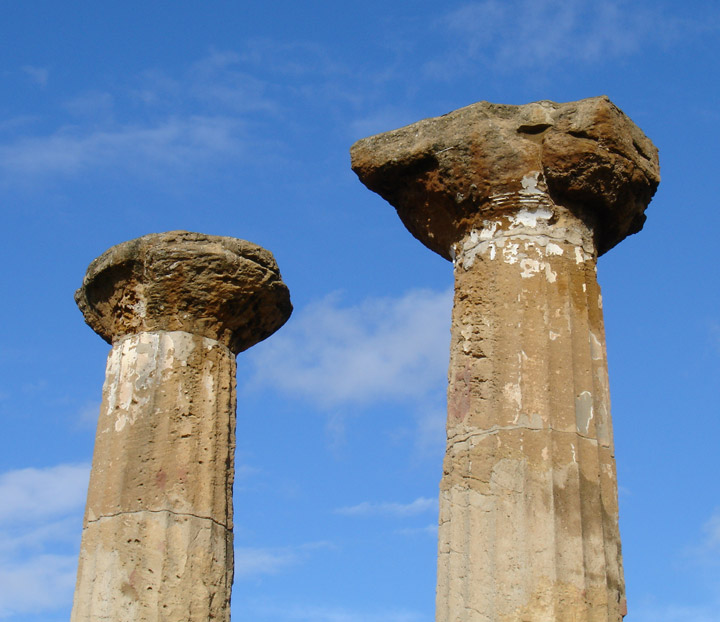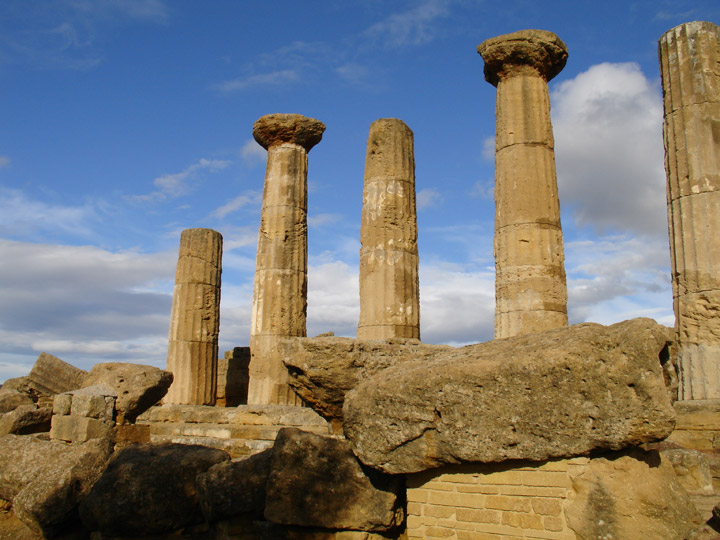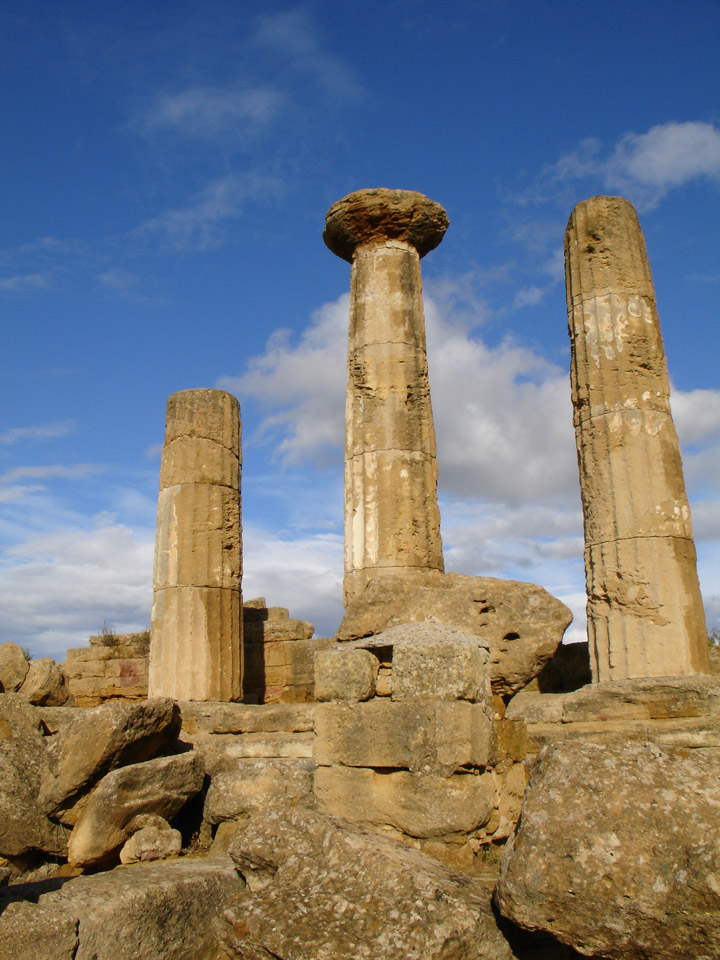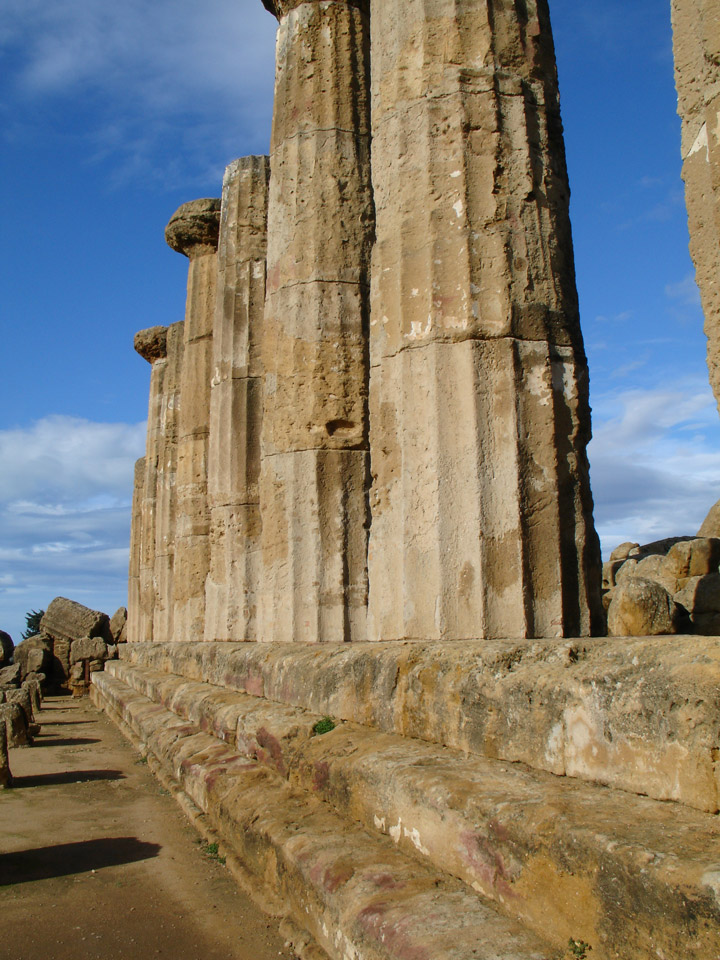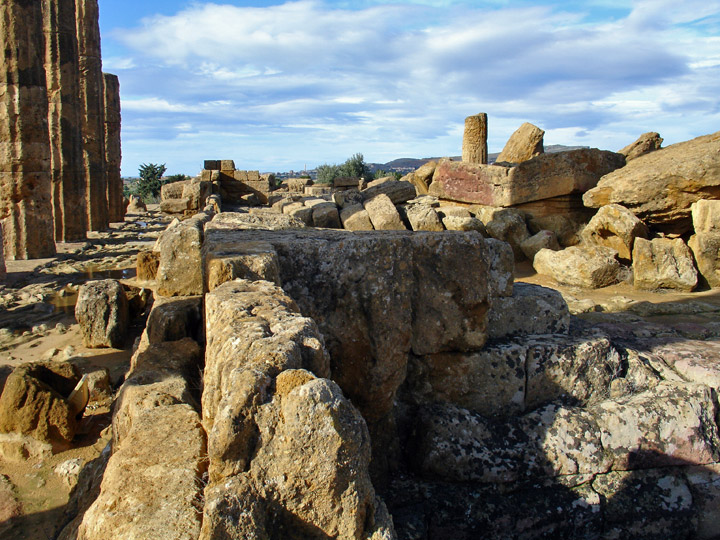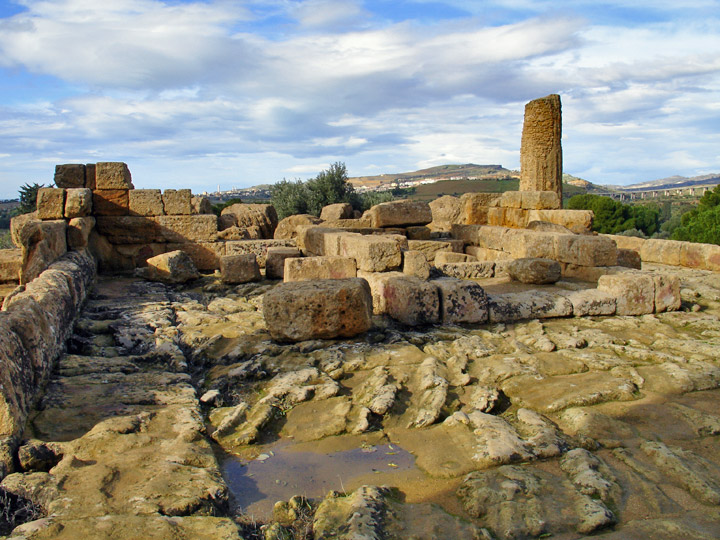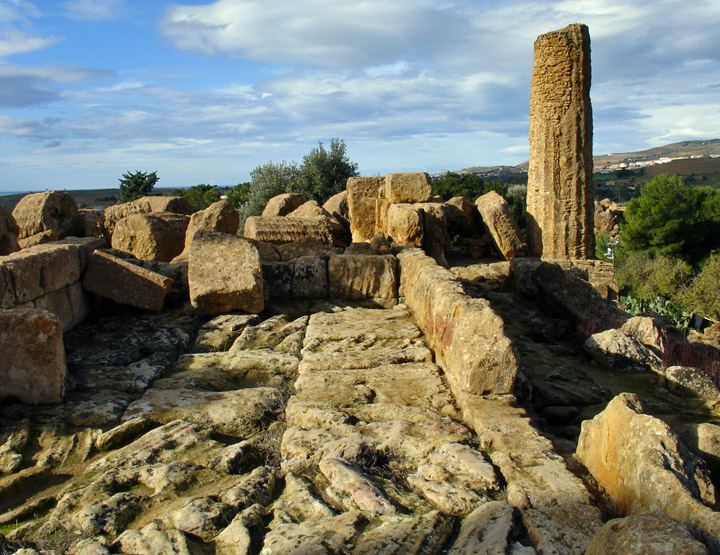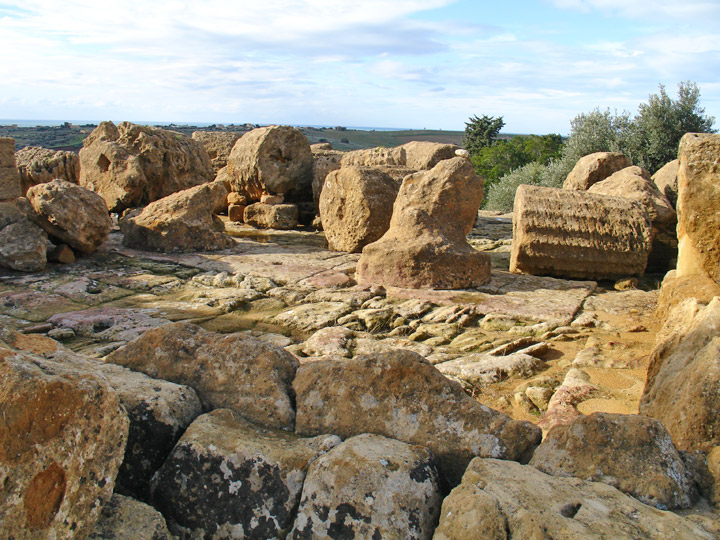

Temple of Zeus
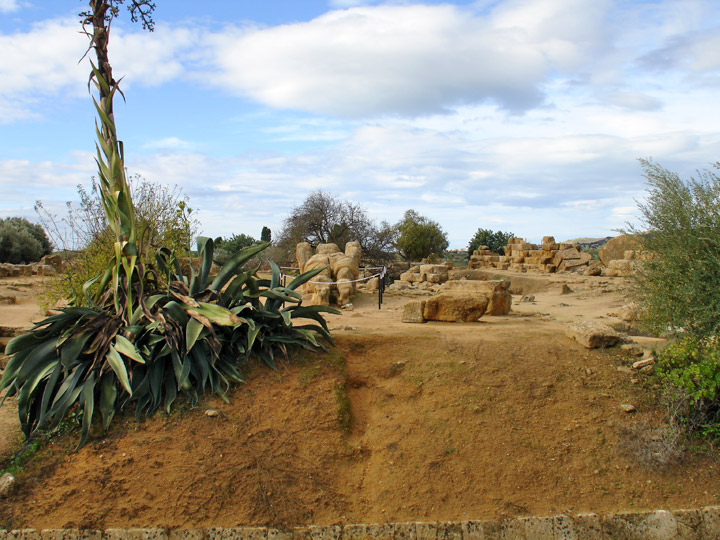
remains of the temple of Olympian Zeus (Jupiter)
The temple of Olympian Zeus (Jupiter) was built to thank Zeus after the successful war of the Agrigentinians against the Carthaginians in 480 BC. Originally the temple was 113 metres long and 56 metres large, one of the most impressive in ancient times. It had a trabeations supported by 20 metre tall columns alternated by the so-called Telamoni, huge man-like statues. Many of the tufa blocks have peculiar U-shape cuts, which were used to channel the rope when lifting and setting the stones.
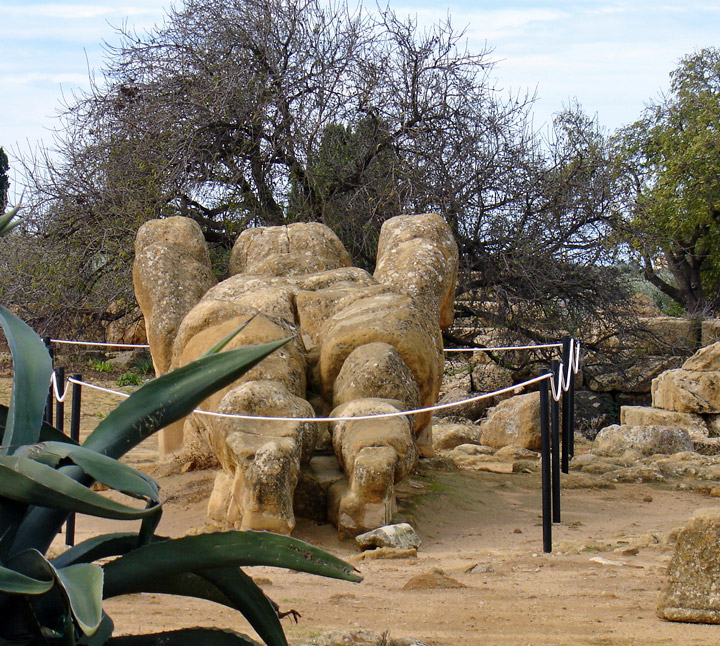
Telamon
The Greek temple emerged as the archetypal shrine of all time. Unlike the Egyptians, the Greeks put their walls inside to protect the cella and their columns on the outside, where they could articulate exterior space. Perhaps for the first time, the overriding concern is for the building seen as a beautiful object externally, while at the same time containing precious and sacred inner space. Greek architects have been praised for not crushing the viewer with over monumentality; yet they found it appropriate to build temples on basically the same theme ranging in size from the tiny Temple of Nike Apteros (427-424 BC) of about 6 by 9 m (about 20 by 30 ft) on the Athens Acropolis to the gigantic Temple of Zeus (500? BC) at Agrigento in Sicily, which covered more than 1 hectare (more than 2 acres). The Greeks seldom arranged their monuments hierarchically along an axis, preferring to site their temples to be seen from several viewpoints in order to display the relation of ends to sides.
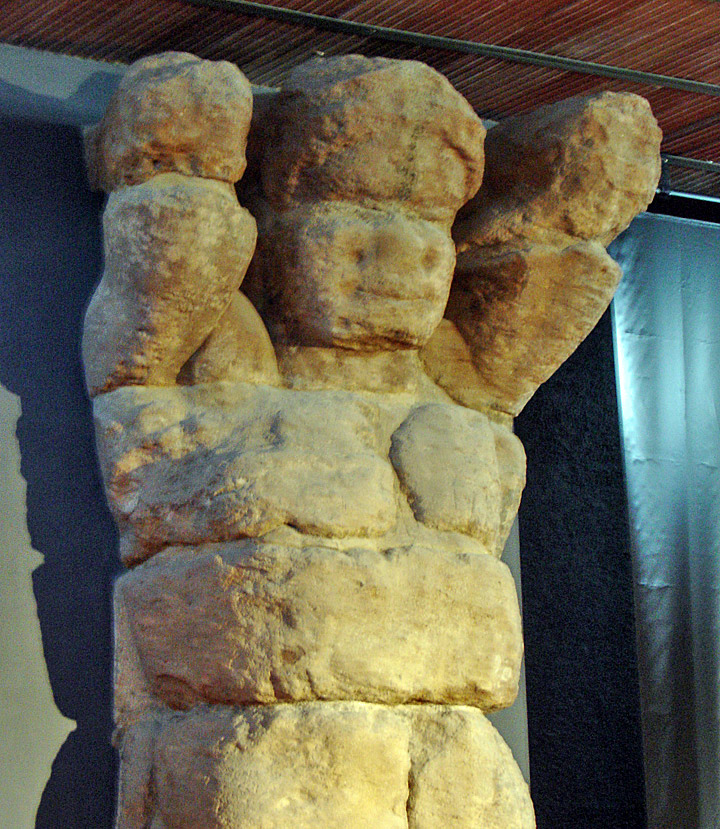
Telamon figure, now in the Archaeological Museum
Photos from the Archaeological Museum
In successive efforts during many centuries the Greeks modified their earlier
models. Concern for the profile of the building in space spurred designers
toward perfection in the articulation of parts, and these parts became
intellectualized as stylobate, base, shaft, capital, architrave, frieze,
cornice, and pediment, each representing metaphorically its structural purpose.
Text from Microsoft Encarta

remains of a capital from the temple of Zeus
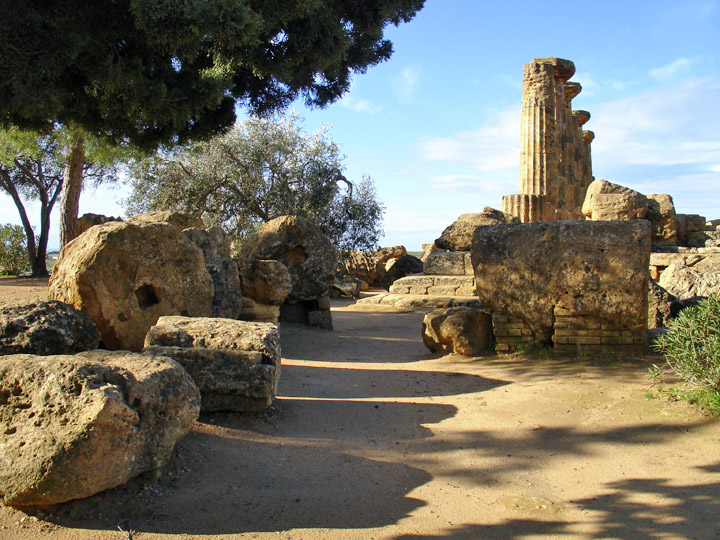
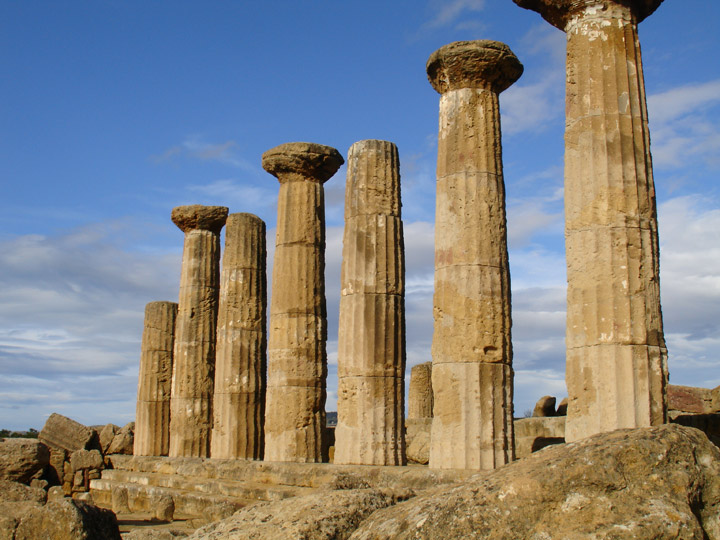
temple of Hercules
